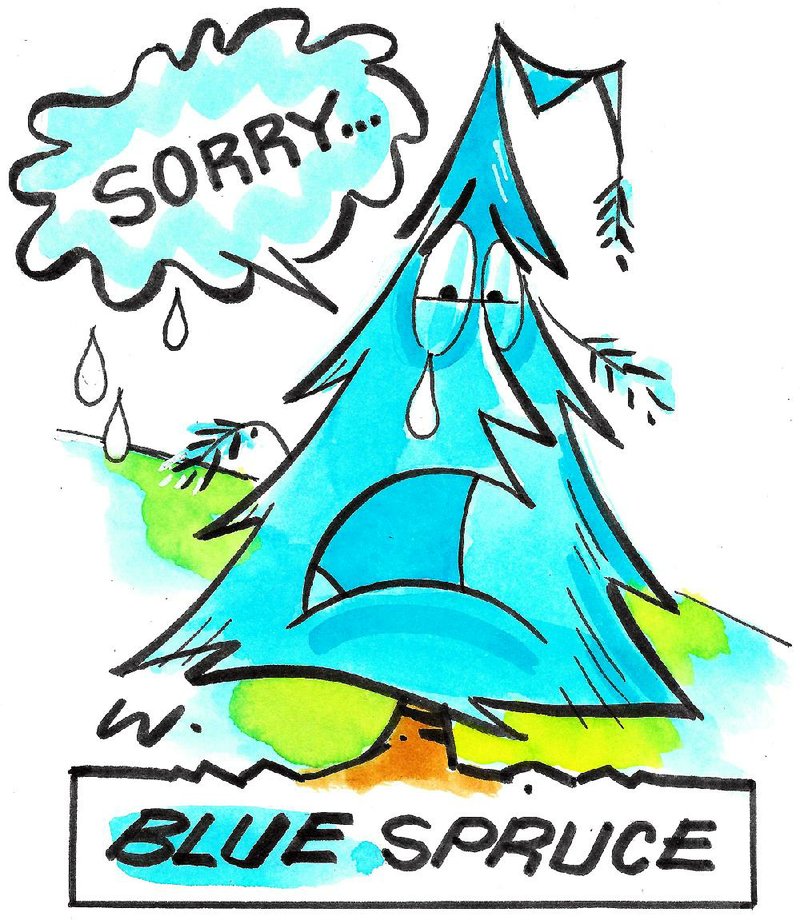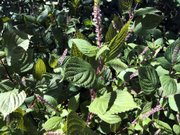Q I was recently in the beautiful Smoky Mountains and fell in love with the blue spruce. I am now searching for the best place to buy a quality, beautiful blue spruce. And the best information. That's where you come in -- when should I plant and what type of care does it need?
A I am often asked by gardeners moving to Arkansas from points north and west where is the best place to plant a Colorado blue spruce, and my answer is usually -- Colorado. While that is a bit tongue-in-cheek, it is not easy to grow a blue spruce tree in Arkansas. If you live in the northern tier of the state, you will have an easier time than if you live in the central or southern regions. Since the trees do get large (if they live) you would need to give it room to grow. Make sure you have a well-drained spot where the soil is good and deep for the roots to grow in. Plant it this fall, so it can get established during its happy time (cool weather). Water when dry and mulch well. Water in the summer when it gets dry -- every summer. If you can find a spot that gets a bit of shade in the afternoon, that would be ideal. You can find some beautiful blue spruce trees growing in Bentonville and Fayetteville and even a sprinkling in Little Rock, but they are not something you can stick in the ground and forget about. Hot, humid weather is not their friend.
Q I would like to know what can be done about black spots on yellow leaves of rose bushes. My plant looks awful.
A Black spot on roses is a very common fungal disease on roses. It starts out with black spots on healthy leaves and then the whole leaf will turn yellow and begin to shed. Many hybrid tea roses are highly susceptible, while newer Earth Kind roses are more resistant. If you have a variety that is susceptible, don't wait until you see the disease, start a fungicide-spray program in the spring when the plants begin active growth and continue it throughout the growing season.
Q We have two Japanese maples in our yard that have wild and "stringy" individual branches growing out of them. Both have been pruned over the years but, as you can see in the picture, the wild branches never go away. One was a gift from a neighbor when she moved way, and the other was bought as a seedling at Garvan Woodland Gardens. Will these trees ever become the graceful Japanese maples we love to look at? I've suggested to my wife that we cut them down while they are small enough to deal with and replace them. She wants a second opinion.
A I think cutting them down is an extreme approach. Some Japanese maples will send up these errant shoots. When you see one, simply cut it back. While Japanese maples can develop beautiful structure and form in the landscape, it doesn't happen totally on their own. Pruning and thinning cuts help make it happen. I prefer a more natural look -- not something sheared into a ball. For now, remove the gangly tall sprouts and later, in late February, do some thinning. In time you can have beautiful trees, but they still might send up some wild shoots from time to time.
Q Can you identify this plant? We live in Bella Vista and it has sprouted up rapidly this summer along the edge of our backyard just as the yard begins to descend down into the ravine. This is a place where we would really like some thick growth, but I do not want a noxious weed. Thank you for whatever help you can give us.
A The plant is Perilla frutescens. The plants can be green like yours or a deep red. There are also some improved ornamental varieties. It is in the mint family and can spread like gangbusters. You can see yours has a lot of seeds set, and it will reseed itself. Some gardeners encourage it, while others try to eradicate it. If you can keep it mowed or contained on one side and let it fill the ravine it may be OK.
Janet B. Carson is a horticulture specialist for the University of Arkansas Cooperative Extension Service. Write to her at 2301 S. University Ave., Little Rock, Ark. 72204 or email her at
jcarson@arkansasonline.com
HomeStyle on 10/14/2017

